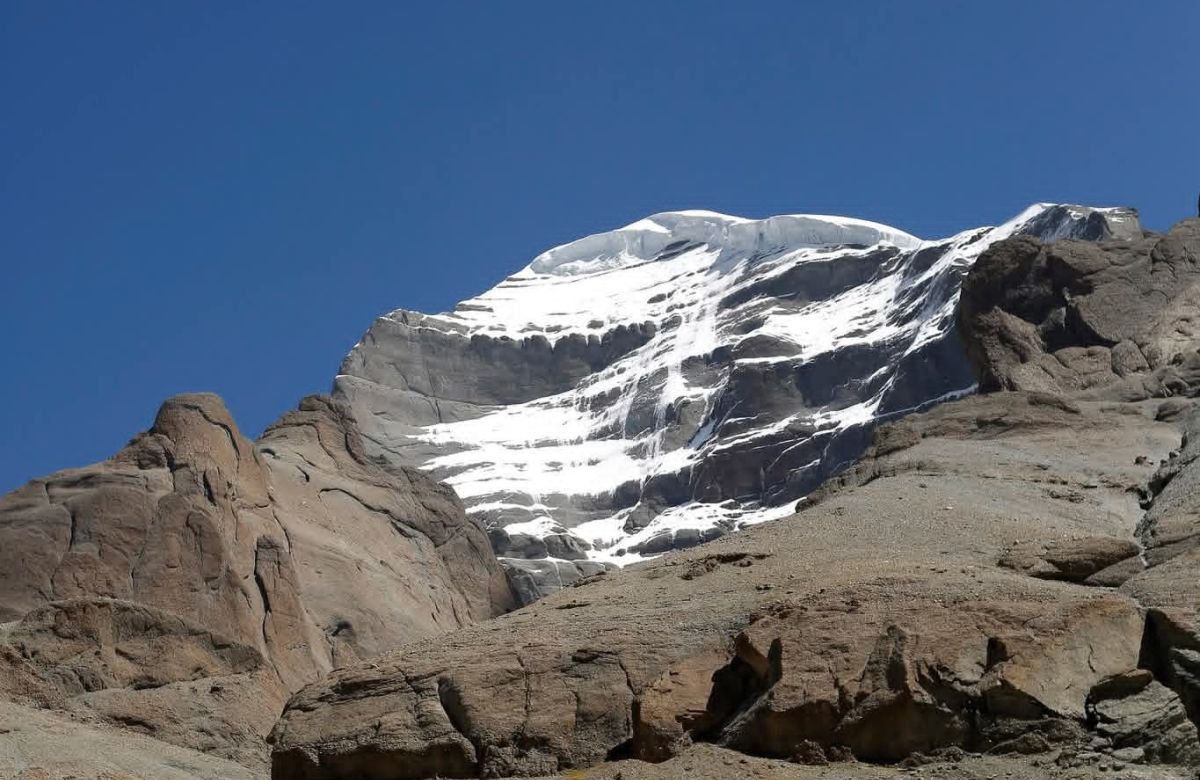Nepal to Kailash Mansarovar Distance: A Complete Travel Guide

Get in touch with our Staff members and get discounted offers for your trip.


Straight-Line Distance: The aerial distance between Kathmandu (Nepal) and Mount Kailash (Tibet) is approximately 538 kilometers.
Overland Distance By road: the distance extends to around 820 kilometers, as the route winds through high mountain passes, valleys, and the Tibetan Plateau. The actual travel distance depends on the chosen route — Kyirung (overland), Simikot–Hilsa (helicopter), or Lhasa (flight).
There are three main routes to reach Kailash Mansarovar from Nepal, each with its own unique experience, duration, and level of comfort.
Route: Kathmandu → Syabrubesi → Kyirung → Saga → Lake Mansarovar → Darchen → Kailash Parikrama → Return via same route
Total Distance: Approx. 820 km
Duration: 10 to 12 days
Key Highlights:
Beautiful drive through the Himalayas and Tibetan plateau
Visits to Tibetan towns such as Kyirung and Saga
Opportunity to complete the sacred Kailash Kora (Parikrama)
Best For: Travelers seeking a complete overland pilgrimage experience with scenic and cultural immersion.
Route: Kathmandu → Nepalgunj (flight) → Simikot (flight) → Hilsa (helicopter) → Taklakot → Mansarovar → Darchen → Kailash Parikrama → Return via same route
Total Distance: Around 970 km
Duration: 7 to 9 days
Key Highlights:
Combination of flight, helicopter, and road travel
Faster and less physically demanding
Breathtaking aerial views of the Himalayas
Best For: Those with limited time or those preferring a shorter, more comfortable journey.
Route: Kathmandu → Lhasa (by flight) → Shigatse → Saga → Mansarovar → Darchen → Kailash Parikrama → Return via Lhasa
Total Distance: Approximately 1,100 km
Duration: 10 to 12 days
Key Highlights:
Visit famous Tibetan monasteries and heritage sites in Lhasa
Smooth travel experience with acclimatization opportunities
Best For: Pilgrims who want to combine the Kailash Yatra with cultural exploration in Tibet.
| Segment | Distance (Approx.) | Travel Time |
|---|---|---|
| Kathmandu → Syabrubesi | 145 km | 6–7 hours |
| Syabrubesi → Kyirung | 45 km | 2 hours |
| Kyirung → Saga | 200 km | 6–7 hours |
| Saga → Lake Mansarovar | 300 km | 8–9 hours |
| Mansarovar → Darchen | 30 km | 1 hour |
| Kailash Parikrama (Trek) | 52 km | 3 days |
To enter Tibet and undertake the Kailash Mansarovar Yatra from Nepal, certain travel permits and visas are mandatory. All of these are arranged through authorized travel agencies.
Valid Passport (minimum 6 months validity)
Chinese Visa
Tibet Travel Permit
Alien’s Travel Permit (for restricted regions)
Group Visa (issued in Kathmandu)
Medical Fitness Certificate for high-altitude travel
Kailash Mansarovar lies at altitudes ranging between 4,500 m and 5,600 m. Proper acclimatization and physical preparedness are crucial to avoid altitude-related issues.
Spend at least 1–2 days acclimatizing at Kyirung or Saga.
Stay hydrated and avoid alcohol.
Eat light, energy-rich meals.
Consult your doctor before departure for altitude medication (like Diamox).
Practice breathing and light fitness exercises before the trip.
Thermal and woolen wear
Waterproof jacket and trekking shoes
Cap, gloves, and sunglasses
Personal medicines and first-aid kit
Reusable water bottle and energy snacks
Small backpack for Parikrama
Trekking poles and rain cover
Mount Kailash is considered the abode of Lord Shiva — the center of the universe in Hindu belief.
Lake Mansarovar symbolizes purity and divine energy; pilgrims often perform ritual baths and meditation along its banks.
The Kailash Parikrama (52 km trek) is regarded as a path to liberation (Moksha) — a life-changing spiritual experience.
Respect local customs, avoid loud behavior near monasteries or sacred lakes, and always seek permission before photographing locals or monks.
Nepal offers the most convenient and fastest access to Kailash Mansarovar.
Kathmandu serves as the main base for obtaining Chinese group visas and Tibet entry permits.
Nepal routes combine natural beauty, cultural richness, and logistical efficiency, making them ideal for both NRIs and international travelers.
The distance from Nepal to Kailash Mansarovar may span several hundred kilometers, but the spiritual journey it represents goes far beyond physical miles. Whether you choose the Kyirung Overland Route, the Helicopter Route via Simikot, or the Lhasa Air Route, each offers a deeply personal connection to divinity, self-reflection, and peace.
With proper preparation, trusted guidance, and reverence for the Himalayas, the Kailash Mansarovar Yatra becomes an unforgettable pilgrimage that transcends boundaries — of nations, faiths, and the self.